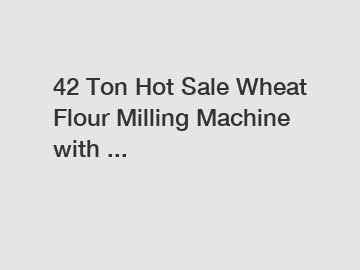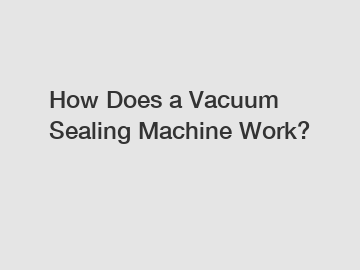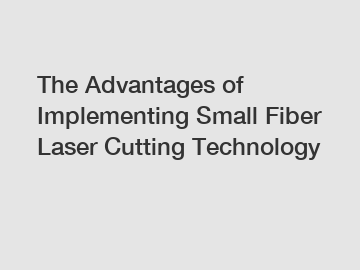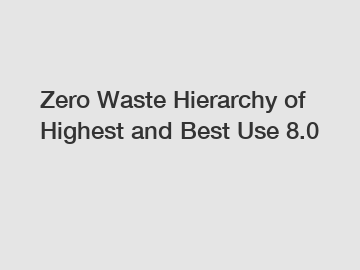A Guide to Flow Wrapping (Horizontal Bagging)
A Guide to Flow Wrapping (Horizontal Bagging)
A Guide to Flow Wrapping (Horizontal Bagging)
Flow wrapping is used for packing solid items including biscuits, scratch cards and pharmaceuticals. If your business is looking to utilise flow wrapping for your products, this guide can help.
A Guide to Flow Wrapping (Horizontal Bagging)
A Guide to Flow Wrapping (Horizontal Bagging)
Flow wrapping is used for packing solid items including biscuits, scratch cards and pharmaceuticals. If your business is looking to utilise flow wrapping for your products, this guide can help.
SEE OUR FLOW WRAPPING SERVICES
In this guide
This guide will explain what flow wrapping is, highlight the best-suited products and answer frequently asked questions.
- What is flow wrapping?
- What type of product is flow wrapping suitable for?
- What will the bag look like?
- What benefits does flow wrapping offer?
- What materials are used?
- How does flow wrapping work?
- What quantities can you work with?
- How long does the process take?
- What are the expected costs?
- Flow wrapping vs shrink wrapping
- Flow wrap printing
- Why choose WePack?
Looking for WePack's Flow Wrapping Services?
FIND OUT MORE
What is flow wrapping?
The product moves horizontally along a machine, then wrapped in film and sealed at either end by horizontal flow wrapping machines.
When your product is flow wrapped you end up with a similar bag to what is produced by a Vertical Form Fill Seal service. It will look something like this:
Flow wrapping is also called horizontal bagging, pillow-pouch wrapping, fin-seal wrapping and crimp-seal wrapping.
What type of product is flow wrapping suitable for?
Any solid item that can be pushed along a horizontal belt is suitable for flow wrapping. A chocolate bar, a pack of biscuits, a pack of tissues, a scratch card; any product that needs to be put into a bag that can ultimately be pushed.
Small granular items do not work for flow wrapping – vertical form fill seal is best for this kind of product.
What will the bag look like?
Conventionally a bag produced by flow wrapping is rectangular, though square bags can also be created. The bag can be printed, clear or a single colour.
What benefits does flow wrapping offer?
Flow wrapping can preserve your raw material and offer protection.
Good flow wrapping restricts the packaging around the product so that it won’t move a lot in the package and be disturbed. The material used to seal the pack is also kept to a minimum so that the tails aren’t too long.
This means the pack can be neatly placed in outer packaging, reducing the number of resources needed and aiding transport.
Flow wrapping can also be combined with gas flushing. Gas flushing helps preserve your food by injecting a nitrogen mix into the pack. This displaces the oxygen in the bag.
What materials are used?
Just like vertical form fill seal, the packaging materials for a flow wrapper are made of either:
- polyethylene terephthalate (PET) - a common thermoplastic polymer resin of the polyester family, often used for containers of liquids and food.
- polyethylene (PE) - the most common plastic in use today. It has several key usages including plastic packaging.
Both are common types of plastic. They are strong, robust materials that keep products fresh.
Mastering Horizontal Flow Wrapping: A Comprehensive Guide
Introduction:
Horizontal flow wrapping machines stand as a cornerstone in the world of packaging, embodying efficiency, versatility, and innovation. These machines, pivotal in the automated packaging of a vast array of products, represent a significant leap from traditional packaging methods.
Fundamentally, a horizontal flow wrap machine is designed to wrap products in a continuous sequence using a horizontal motion process. Products ranging from food to consumer goods are encased in a film layer, creating protective, consistent, and visually appealing packages.
The introduction of horizontal flow wrapping machines revolutionized the packaging industry. They offered a faster and more adaptable solution to various product shapes and sizes compared to earlier methods. This adaptability and efficiency have made them popular across diverse industries, including food, pharmaceuticals, and consumer goods.
As we delve deeper into the specifics of horizontal flow wrapping machines, we will explore their operational mechanisms, compare them with other packaging methods, and highlight the key factors to consider when integrating them into a production line. Join us in uncovering the intricacies that make horizontal flow wrapping machines indispensable in modern packaging.
How Horizontal Flow Wrap Machines Work
The Technology and Mechanisms Involved
Horizontal flow wrap machines are marvels of engineering, designed to package products with precision and speed. While seemingly straightforward, their operation involves a series of complex mechanisms working in unison. Here’s a breakdown of how these machines function:
Conveying Products
: The process starts with placing products on a conveyor belt. They are then transported to the
forming area of the machine
. This can be done
manually or automatically
, depending on the machine and the product.
Film Wrapping
: As the product moves along the belt, a roll of film, typically made from materials like polyethylene or polypropylene, is unwound and formed into a tube around the product. This film can be clear or printed, adding to the visual appeal and branding of the package.
Sealing and Cutting
: Once the film encases the product, the
machine seals it on all sides
. This is typically done using heat and pressure, ensuring the product is securely wrapped. The machine then cuts the film between products, creating individual packages. The result is a
package with a non-lap-type seal on the bottom
and crimped end seals.
Discharge of Finished Products
: The final step in the process is the discharge of the wrapped products, now ready for further processing, such as boxing or palletizing.
Flow wrapping machines are celebrated for their speed, ease of changeover, and suitability for a wide range of products, making them a versatile solution in the packaging industry. In the next section, we will explore the differences between flow wrapping and overwrapping, shedding light on their distinct applications and advantages.
Flow Wrap vs. Overwrap: Understanding the Differences
Technical Distinctions and Applications
The packaging industry utilizes various methods to safeguard and present products, among which flow wrapping and overwrapping are prevalent. Though they may seem similar, these two methods have distinct differences in their approach and results.
Flow Wrapping:
Flow wrapping involves a product in a clear or printed film, usually made from polypropylene (PP) or polyethylene (PE). This process encases the product in a tight, secure package, sealed on all sides.
The method is known for its versatility and is used for various products, from food to consumer goods. It’s particularly effective for items that require a tight seal for freshness or protection.
Overwrapping:
Overwrapping, in contrast, is more akin to gift wrapping. It’s used for products with flat sides, like boxes, cartons, and trays. The method involves wrapping products in heat-sealable film, with the final package resembling a neatly wrapped gift.
The overwrap is often considered more visually appealing but provides a less complete barrier than flow wrap. It’s typically used for products that benefit from an attractive presentation, such as boxed chocolates or cosmetics.
Comparative Benefits and Use Cases
Flow Wrap
:
Provides a more secure and comprehensive barrier.
Suitable for products that require tight packaging
and extended shelf life.
Overwrap
:
Offers a more aesthetically pleasing package with a traditional wrapped look.
Ideal for products where visual appeal is a priority, and a complete barrier is not as critical.
Understanding these differences is crucial for manufacturers and packagers in selecting the appropriate method that aligns with their product requirements and marketing strategies. In the following sections, we will introduce the prominent manufacturers of flow wrappers and delve deeper into the materials used in flow wrapping.
Manufacturers of Flow Wrappers
Leading Contributors in the Flow Wrapping Industry
Several key manufacturers support the flow wrapping sector, bringing innovations and specialties. These companies are instrumental in advancing the technology and capabilities of flow-wrapping machines, catering to the diverse needs of various industries. Let’s take a look at some of the notable manufacturers in this field:
Campbell Wrapper Corporation:
Known for its advanced flow wrappers and feeding equipment, Campbell Wrapper Corporation offers solutions that emphasize precision, efficiency, and reliability.
Cavanna North America:
Cavanna specializes in packaging and flow wrapper manufacturing, providing systems renowned for their quality and adaptability to different product types.
Omori North America:
Omori stands out for its innovative packaging equipment, including flow wrappers that cater to a wide range of packaging needs with a focus on sustainability and efficiency.
Repack:
A part of the ProMach family, Reepack offers flow wrapping, tray packaging, and vacuum sealing systems, known for their versatility and cutting-edge technology.
Crawford Packaging:
Crawford Packaging is another key player, providing flow wrap equipment to enhance productivity and packaging quality for various applications.
These manufacturers supply the machinery and contribute to the ongoing development and innovation within the packaging industry. They play a vital role in ensuring businesses can access the latest technologies and solutions to meet their packaging requirements.
In the next section, we will explore the materials used in flow wrapping machines, discussing their properties and the implications for different types of packaging.
Materials Used in Flow Wrapping Machines
Exploring Types of Plastics and Materials in Packaging
The efficiency and effectiveness of flow-wrapping machines are significantly influenced by the types of materials they use. Understanding the properties and applications of these materials is crucial for achieving optimal packaging results. Let’s delve into the common materials utilized in flow wrapping:
Polypropylene (PP):
Polypropylene is widely used in flow wrapping due to its strength, clarity, and flexibility. It’s ideal for packaging various products, from food to consumer goods, and provides a good moisture barrier.
Polyethylene (PE):
Polyethylene, particularly low-density polyethylene (LDPE), is another popular choice for flow wrap films. It offers flexibility and durability and is often used for products that require a softer packaging feel.
Polyolefin:
Polyolefin films are known for their versatility and are used in various flow-wrapping applications. These films are clear, strong, and capable of producing a tight seal, making them suitable for various products.
Laminates:
Laminated films combine multiple layers of different materials to leverage the benefits of each. They are used when specific barrier properties, such as oxygen or light barriers, are required in the packaging.
Considerations in Material Selection
The choice of material for flow wrapping depends on several factors:
Product Requirements
: The nature of the product, including its sensitivity to moisture, air, or light, dictates the type of material needed.
Aesthetic and Branding
: Visual appeal is crucial in packaging, and the clarity and printability of the film play a significant role.
Environmental Considerations
: Recyclable materials with a lower environmental impact are increasingly preferred with growing environmental concerns.
The next section will define ‘flow-wrapped’ packaging and its significance in the industry, explaining why this method is favored for certain products.
Understanding ‘Flow Wrapped’ Packaging
Defining the Term and Its Industry Significance
Flow wrapped’ is a term used to describe the packaging process and the final packaged product created by horizontal flow wrap machines. This method involves encasing a product in a flexible film and sealing it on all sides to create a secure and protected package. Let’s break down what makes flow-wrapped packaging unique and beneficial:
The Process
: Flow wrapping starts by placing the product on a conveyor belt, which then moves the product through a film. The film is wrapped around the product and sealed longitudinally (along the length of the product),
forming a ‘fin’ or ‘overlap’ seal
. The ends are then sealed, creating a tightly enclosed
package that resembles a pillow
pouch.
Distinctive Features
: A flow-wrapped package is characterized by its tight, form-fitting wrap, which can be clear or printed. This method provides a continuous packaging solution that is efficient and adaptable to various product sizes and shapes.
Benefits of Flow-Wrapped Packaging
Protection and Freshness
: Flow-wrapped packages provide an effective barrier against contaminants, moisture, and air, maintaining product quality and freshness.
Versatility
: The method suits a wide range of products, from food items like snacks and confections to non-food items like healthcare products and hardware.
Branding and Display
: Clear or printed film in flow wrapping allows for excellent branding opportunities, with the product visible through the
packaging or showcased through custom
graphics.
Efficiency
: Flow wrapping is a fast and cost-effective
packaging method for high-volume production needs
.
Thus, Flow-wrapped packaging plays a crucial role in the packaging industry, offering protection, aesthetics, and efficiency. The next section will delve into the materials commonly used in flow wrap packagingflow wrap packaging, highlighting their properties and applications.
Flow Wrap Packaging Materials
Detailed Look at Commonly Used Materials
The choice of material in flow wrap packaging is pivotal, impacting everything from product preservation to environmental sustainability. Different materials offer distinct benefits and are chosen based on the specific needs of the product being packaged. Here’s an overview of the typical materials used in flow wrapping:
Polyethylene (PE):
PE, especially Low-Density Polyethylene (LDPE), is popular due to its flexibility and strength. It’s commonly used for products that require a softer packaging feel and is excellent for products needing a moisture barrier.
Polypropylene (PP):
PP is renowned for its clarity and strength, making it ideal for showcasing products while providing durable protection. It’s a versatile material used for various products, including food items.
Biaxially Oriented Polypropylene (BOPP):
BOPP is a polypropylene variant stretched in both the machine direction and across the machine direction. This stretching improves its strength and clarity, making it an excellent choice for high-quality printing and branding.
Eco-Friendly Alternatives:
With growing environmental consciousness, there’s an increasing demand for sustainable materials in flow wrap packaging. Biodegradable and compostable films are being developed and used as alternatives to traditional plastics, aligning with eco-friendly practices.
Environmental Considerations and Innovations
In addition to functionality, the environmental impact of packaging materials is a crucial consideration. Manufacturers are exploring and implementing more sustainable options, such as recyclable materials and films derived from renewable resources. These efforts aim to reduce the ecological footprint of packaging and meet consumer demand for more environmentally responsible products.
The next section will explore setting up a horizontal flow wrapping machine, providing insights into the best practices and tips for efficient operation.
Setting Up a Flow Wrapper
Step-by-Step Guide for Efficient Operation
Setting up a horizontal flow wrapping machine correctly ensures efficient and reliable packaging. Here’s a step-by-step guide to help you get started:
Initial Setup:
Begin by positioning the machine on a stable surface and ensuring all components are clean and in good working order. Check for any signs of wear or damage that might affect performance.
Loading the Film:
Load the wrapping film onto the machine’s film reel. Please make sure it’s correctly aligned and the film unwinds smoothly. The film type used should suit the product and the machine’s specifications.
Adjusting the Forming Box and Conveyor:
Set up the forming box, which shapes the film around the product to match the size and shape of the product being packaged. Adjust the conveyor belt speed to ensure products are correctly positioned for wrapping.
Setting Seal Temperatures and Pressure:
Adjust the sealing temperature and pressure according to the film type and thickness. This is critical for achieving strong, consistent seals.
Aligning and Testing the Seals:
Before starting full-scale production, run a few test packages to check the alignment and integrity of the seals. Make any necessary adjustments to the sealing jaws or pressure settings.
Final Checks and Calibration:
Conduct a final check of all settings, including film tension, sealing temperature, and conveyor speed. Ensure that the machine is calibrated to provide consistent packaging results.
Best Practices and Tips
Regular Maintenance
: Keep the machine clean and well-maintained to prevent downtime and ensure longevity.
Training for Operators
: Ensure operators are properly trained to use the machine, understand its settings, and troubleshoot common issues.
Monitoring Performance
: Regularly monitor the
machine’s performance and make adjustments as necessary to maintain packaging
quality.
Proper setup and maintenance of a horizontal flow wrapping machine are key to maximizing its efficiency and lifespan. The next section will conclude our comprehensive look at horizontal flow wrapping machines, summarizing their importance in the modern packaging industry.
Conclusion:
Horizontal flow wrapping machines are pivotal in the modern packaging industry, offering a perfect blend of efficiency, versatility, and innovation. As we have explored, these machines stand out for their ability to package a wide range of products swiftly and effectively while also providing the flexibility to accommodate different materials and packaging styles.
From small-scale operations to large industrial setups, flow wrappers have proven to be invaluable assets. They enhance the productivity of packaging lines and contribute significantly to maintaining product quality and extending shelf life. The ability to use various materials, including eco-friendly options, further elevates their importance in today’s environmentally conscious market.
As the packaging industry evolves, horizontal flow wrapping machines will undoubtedly remain at the forefront, adapting to new challenges and demands. Their continuous innovation ensures they keep pace with changing consumer preferences and emerging packaging trends.
In summary, horizontal flow wrappers are more than just machines; they are integral components of a modern packaging process, essential for meeting the dynamic needs of a diverse range of products and industries.
FAQ
What is a Horizontal Flow Wrap Machine?
A horizontal flow wrap machine is a sophisticated packaging equipment designed for high-efficiency wrapping. It operates on a horizontal axis and is adept at encasing various products in protective film. This machine is essential in industries ranging from food and confectionery to consumer electronics, offering a flexible, fast, and reliable method to package products for shelf display or shipping.
How Does a Flow Wrap Machine Work?
Flow wrap machines operate through a series of coordinated steps. Products are placed on a conveyor belt, transporting them to a forming area. Here, a continuous film envelops the products. Precision-engineered sealing components seal the film around the products, typically on three sides, forming a tightly enclosed package. The process concludes with the cutting of individual packages, ready for distribution. This seamless operation is key to its high throughput and consistency in packaging quality.
What is the Difference Between Flow Wrap and Overwrap?
The primary difference lies in the packaging approach and outcome. Flow wrapping tightly seals products in a form-fitting plastic film, offering a more comprehensive protective barrier and is often used for individual product packaging. On the other hand, overwrapping involves loosely wrapping products, typically boxed items, in a plastic film for aesthetic enhancement and minimal protection. Flow wrapping is preferred for its protective qualities while overwrapping is chosen for visual appeal and ease of package opening.
Who Makes Flow Wrappers?
Prominent manufacturers like Campbell Wrapper Corporation, Cavanna North America, and Omori North America lead the industry in flow wrapping technology. These companies are recognized for their commitment to innovation, producing machines that cater to a wide range of packaging needs with advanced features for speed, flexibility, and material efficiency.
What Type of Plastic is Flow Wrap?
Flow wrap is commonly made from flexible plastic materials like polyethylene (PE) and polypropylene (PP). These materials are selected for their durability, flexibility, and ability to create airtight seals. They also offer clarity for product visibility and are adaptable for printing branding and product information.
What Does Flow Wrapped Mean?
When a product is described as ‘flow wrapped,’ it indicates that it has been packaged using a flow wrap machine. This means the product is encased in a plastic film and sealed on all sides to form a secure, airtight package. Flow wrapping is especially valued for maintaining product freshness, especially in the food industry.
What Material is Flow Wrap Packaging Made Of?
Flow wrap packaging is primarily made of plastic films, with polyethylene and polypropylene being the most common due to their sealing properties and flexibility. Innovations in sustainable packaging have also introduced biodegradable and recyclable materials, catering to growing environmental concerns.
How Do You Set Up a Flow Wrapper?
Setting up a flow wrapper requires precision and careful calibration. It involves installing the film roll, adjusting the forming box to match the product dimensions, calibrating the sealing temperature and pressure, and aligning the film feed for consistent wrapping. Operators must be well-trained in these setup procedures to ensure the machine runs smoothly and efficiently, producing consistently high-quality packages.
Additional reading:What is a Linear Weigher and Why
Carton Packaging Machine vs. Manual Packing: Which Is Better?
Hot Dip Galvanizing Equipment for Brazil: Imported vs. Local Options
Top Circular Chrome Plating Machines of 2024
Top 5 Portable Laser Cleaning Machines in 2024
What Affects Vacuum Vegetable Oil Refinery Machine Price?
How Can Small Fiber Laser Cutters Improve Production Efficiency?
SEE OUR FLOW WRAPPING SERVICES
In this guide
This guide will explain what flow wrapping is, highlight the best-suited products and answer frequently asked questions.
- What is flow wrapping?
- What type of product is flow wrapping suitable for?
- What will the bag look like?
- What benefits does flow wrapping offer?
- What materials are used?
- How does flow wrapping work?
- What quantities can you work with?
- How long does the process take?
- What are the expected costs?
- Flow wrapping vs shrink wrapping
- Flow wrap printing
- Why choose WePack?
Looking for WePack's Flow Wrapping Services?
FIND OUT MORE
What is flow wrapping?
The product moves horizontally along a machine, then wrapped in film and sealed at either end by horizontal flow wrapping machines.
When your product is flow wrapped you end up with a similar bag to what is produced by a Vertical Form Fill Seal service. It will look something like this:
Flow wrapping is also called horizontal bagging, pillow-pouch wrapping, fin-seal wrapping and crimp-seal wrapping.
What type of product is flow wrapping suitable for?
Any solid item that can be pushed along a horizontal belt is suitable for flow wrapping. A chocolate bar, a pack of biscuits, a pack of tissues, a scratch card; any product that needs to be put into a bag that can ultimately be pushed.
Small granular items do not work for flow wrapping – vertical form fill seal is best for this kind of product.
What will the bag look like?
Conventionally a bag produced by flow wrapping is rectangular, though square bags can also be created. The bag can be printed, clear or a single colour.
What benefits does flow wrapping offer?
Flow wrapping can preserve your raw material and offer protection.
Good flow wrapping restricts the packaging around the product so that it won’t move a lot in the package and be disturbed. The material used to seal the pack is also kept to a minimum so that the tails aren’t too long.
This means the pack can be neatly placed in outer packaging, reducing the number of resources needed and aiding transport.
Flow wrapping can also be combined with gas flushing. Gas flushing helps preserve your food by injecting a nitrogen mix into the pack. This displaces the oxygen in the bag.
What materials are used?
Just like vertical form fill seal, the packaging materials for a flow wrapper are made of either:
- polyethylene terephthalate (PET) - a common thermoplastic polymer resin of the polyester family, often used for containers of liquids and food.
- polyethylene (PE) - the most common plastic in use today. It has several key usages including plastic packaging.
Both are common types of plastic. They are strong, robust materials that keep products fresh.
Mastering Horizontal Flow Wrapping: A Comprehensive Guide
Introduction:
Horizontal flow wrapping machines stand as a cornerstone in the world of packaging, embodying efficiency, versatility, and innovation. These machines, pivotal in the automated packaging of a vast array of products, represent a significant leap from traditional packaging methods.
Fundamentally, a horizontal flow wrap machine is designed to wrap products in a continuous sequence using a horizontal motion process. Products ranging from food to consumer goods are encased in a film layer, creating protective, consistent, and visually appealing packages.
The introduction of horizontal flow wrapping machines revolutionized the packaging industry. They offered a faster and more adaptable solution to various product shapes and sizes compared to earlier methods. This adaptability and efficiency have made them popular across diverse industries, including food, pharmaceuticals, and consumer goods.
As we delve deeper into the specifics of horizontal flow wrapping machines, we will explore their operational mechanisms, compare them with other packaging methods, and highlight the key factors to consider when integrating them into a production line. Join us in uncovering the intricacies that make horizontal flow wrapping machines indispensable in modern packaging.
How Horizontal Flow Wrap Machines Work
The Technology and Mechanisms Involved
Horizontal flow wrap machines are marvels of engineering, designed to package products with precision and speed. While seemingly straightforward, their operation involves a series of complex mechanisms working in unison. Here’s a breakdown of how these machines function:
Conveying Products
: The process starts with placing products on a conveyor belt. They are then transported to the
forming area of the machine
. This can be done
manually or automatically
, depending on the machine and the product.
Film Wrapping
: As the product moves along the belt, a roll of film, typically made from materials like polyethylene or polypropylene, is unwound and formed into a tube around the product. This film can be clear or printed, adding to the visual appeal and branding of the package.
Sealing and Cutting
: Once the film encases the product, the
machine seals it on all sides
. This is typically done using heat and pressure, ensuring the product is securely wrapped. The machine then cuts the film between products, creating individual packages. The result is a
package with a non-lap-type seal on the bottom
and crimped end seals.
Discharge of Finished Products
: The final step in the process is the discharge of the wrapped products, now ready for further processing, such as boxing or palletizing.
Flow wrapping machines are celebrated for their speed, ease of changeover, and suitability for a wide range of products, making them a versatile solution in the packaging industry. In the next section, we will explore the differences between flow wrapping and overwrapping, shedding light on their distinct applications and advantages.
Flow Wrap vs. Overwrap: Understanding the Differences
Technical Distinctions and Applications
The packaging industry utilizes various methods to safeguard and present products, among which flow wrapping and overwrapping are prevalent. Though they may seem similar, these two methods have distinct differences in their approach and results.
Flow Wrapping:
Flow wrapping involves a product in a clear or printed film, usually made from polypropylene (PP) or polyethylene (PE). This process encases the product in a tight, secure package, sealed on all sides.
The method is known for its versatility and is used for various products, from food to consumer goods. It’s particularly effective for items that require a tight seal for freshness or protection.
Overwrapping:
Overwrapping, in contrast, is more akin to gift wrapping. It’s used for products with flat sides, like boxes, cartons, and trays. The method involves wrapping products in heat-sealable film, with the final package resembling a neatly wrapped gift.
The overwrap is often considered more visually appealing but provides a less complete barrier than flow wrap. It’s typically used for products that benefit from an attractive presentation, such as boxed chocolates or cosmetics.
Comparative Benefits and Use Cases
Flow Wrap
:
Provides a more secure and comprehensive barrier.
Suitable for products that require tight packaging
and extended shelf life.
Overwrap
:
Offers a more aesthetically pleasing package with a traditional wrapped look.
Ideal for products where visual appeal is a priority, and a complete barrier is not as critical.
Understanding these differences is crucial for manufacturers and packagers in selecting the appropriate method that aligns with their product requirements and marketing strategies. In the following sections, we will introduce the prominent manufacturers of flow wrappers and delve deeper into the materials used in flow wrapping.
Manufacturers of Flow Wrappers
Leading Contributors in the Flow Wrapping Industry
Several key manufacturers support the flow wrapping sector, bringing innovations and specialties. These companies are instrumental in advancing the technology and capabilities of flow-wrapping machines, catering to the diverse needs of various industries. Let’s take a look at some of the notable manufacturers in this field:
Campbell Wrapper Corporation:
Known for its advanced flow wrappers and feeding equipment, Campbell Wrapper Corporation offers solutions that emphasize precision, efficiency, and reliability.
Cavanna North America:
Cavanna specializes in packaging and flow wrapper manufacturing, providing systems renowned for their quality and adaptability to different product types.
Omori North America:
Omori stands out for its innovative packaging equipment, including flow wrappers that cater to a wide range of packaging needs with a focus on sustainability and efficiency.
Repack:
A part of the ProMach family, Reepack offers flow wrapping, tray packaging, and vacuum sealing systems, known for their versatility and cutting-edge technology.
Crawford Packaging:
Crawford Packaging is another key player, providing flow wrap equipment to enhance productivity and packaging quality for various applications.
These manufacturers supply the machinery and contribute to the ongoing development and innovation within the packaging industry. They play a vital role in ensuring businesses can access the latest technologies and solutions to meet their packaging requirements.
In the next section, we will explore the materials used in flow wrapping machines, discussing their properties and the implications for different types of packaging.
Materials Used in Flow Wrapping Machines
Exploring Types of Plastics and Materials in Packaging
The efficiency and effectiveness of flow-wrapping machines are significantly influenced by the types of materials they use. Understanding the properties and applications of these materials is crucial for achieving optimal packaging results. Let’s delve into the common materials utilized in flow wrapping:
Polypropylene (PP):
Polypropylene is widely used in flow wrapping due to its strength, clarity, and flexibility. It’s ideal for packaging various products, from food to consumer goods, and provides a good moisture barrier.
Polyethylene (PE):
Polyethylene, particularly low-density polyethylene (LDPE), is another popular choice for flow wrap films. It offers flexibility and durability and is often used for products that require a softer packaging feel.
Polyolefin:
Polyolefin films are known for their versatility and are used in various flow-wrapping applications. These films are clear, strong, and capable of producing a tight seal, making them suitable for various products.
Laminates:
Laminated films combine multiple layers of different materials to leverage the benefits of each. They are used when specific barrier properties, such as oxygen or light barriers, are required in the packaging.
Considerations in Material Selection
The choice of material for flow wrapping depends on several factors:
For more pack machin factoryinformation, please contact us. We will provide professional answers.
Product Requirements
: The nature of the product, including its sensitivity to moisture, air, or light, dictates the type of material needed.
Aesthetic and Branding
: Visual appeal is crucial in packaging, and the clarity and printability of the film play a significant role.
Environmental Considerations
: Recyclable materials with a lower environmental impact are increasingly preferred with growing environmental concerns.
The next section will define ‘flow-wrapped’ packaging and its significance in the industry, explaining why this method is favored for certain products.
Understanding ‘Flow Wrapped’ Packaging
Defining the Term and Its Industry Significance
Flow wrapped’ is a term used to describe the packaging process and the final packaged product created by horizontal flow wrap machines. This method involves encasing a product in a flexible film and sealing it on all sides to create a secure and protected package. Let’s break down what makes flow-wrapped packaging unique and beneficial:
The Process
: Flow wrapping starts by placing the product on a conveyor belt, which then moves the product through a film. The film is wrapped around the product and sealed longitudinally (along the length of the product),
forming a ‘fin’ or ‘overlap’ seal
. The ends are then sealed, creating a tightly enclosed
package that resembles a pillow
pouch.
Distinctive Features
: A flow-wrapped package is characterized by its tight, form-fitting wrap, which can be clear or printed. This method provides a continuous packaging solution that is efficient and adaptable to various product sizes and shapes.
Benefits of Flow-Wrapped Packaging
Protection and Freshness
: Flow-wrapped packages provide an effective barrier against contaminants, moisture, and air, maintaining product quality and freshness.
Versatility
: The method suits a wide range of products, from food items like snacks and confections to non-food items like healthcare products and hardware.
Branding and Display
: Clear or printed film in flow wrapping allows for excellent branding opportunities, with the product visible through the
packaging or showcased through custom
graphics.
Efficiency
: Flow wrapping is a fast and cost-effective
packaging method for high-volume production needs
.
Thus, Flow-wrapped packaging plays a crucial role in the packaging industry, offering protection, aesthetics, and efficiency. The next section will delve into the materials commonly used in flow wrap packaging, highlighting their properties and applications.
Flow Wrap Packaging Materials
Detailed Look at Commonly Used Materials
The choice of material in flow wrap packaging is pivotal, impacting everything from product preservation to environmental sustainability. Different materials offer distinct benefits and are chosen based on the specific needs of the product being packaged. Here’s an overview of the typical materials used in flow wrapping:
Polyethylene (PE):
PE, especially Low-Density Polyethylene (LDPE), is popular due to its flexibility and strength. It’s commonly used for products that require a softer packaging feel and is excellent for products needing a moisture barrier.
Polypropylene (PP):
PP is renowned for its clarity and strength, making it ideal for showcasing products while providing durable protection. It’s a versatile material used for various products, including food items.
Biaxially Oriented Polypropylene (BOPP):
BOPP is a polypropylene variant stretched in both the machine direction and across the machine direction. This stretching improves its strength and clarity, making it an excellent choice for high-quality printing and branding.
Eco-Friendly Alternatives:
With growing environmental consciousness, there’s an increasing demand for sustainable materials in flow wrap packaging. Biodegradable and compostable films are being developed and used as alternatives to traditional plastics, aligning with eco-friendly practices.
Environmental Considerations and Innovations
In addition to functionality, the environmental impact of packaging materials is a crucial consideration. Manufacturers are exploring and implementing more sustainable options, such as recyclable materials and films derived from renewable resources. These efforts aim to reduce the ecological footprint of packaging and meet consumer demand for more environmentally responsible products.
The next section will explore setting up a horizontal flow wrapping machine, providing insights into the best practices and tips for efficient operation.
Setting Up a Flow Wrapper
Step-by-Step Guide for Efficient Operation
Setting up a horizontal flow wrapping machine correctly ensures efficient and reliable packaging. Here’s a step-by-step guide to help you get started:
Initial Setup:
Begin by positioning the machine on a stable surface and ensuring all components are clean and in good working order. Check for any signs of wear or damage that might affect performance.
Loading the Film:
Load the wrapping film onto the machine’s film reel. Please make sure it’s correctly aligned and the film unwinds smoothly. The film type used should suit the product and the machine’s specifications.
Adjusting the Forming Box and Conveyor:
Set up the forming box, which shapes the film around the product to match the size and shape of the product being packaged. Adjust the conveyor belt speed to ensure products are correctly positioned for wrapping.
Setting Seal Temperatures and Pressure:
Adjust the sealing temperature and pressure according to the film type and thickness. This is critical for achieving strong, consistent seals.
Aligning and Testing the Seals:
Before starting full-scale production, run a few test packages to check the alignment and integrity of the seals. Make any necessary adjustments to the sealing jaws or pressure settings.
Final Checks and Calibration:
Conduct a final check of all settings, including film tension, sealing temperature, and conveyor speed. Ensure that the machine is calibrated to provide consistent packaging results.
Best Practices and Tips
Regular Maintenance
: Keep the machine clean and well-maintained to prevent downtime and ensure longevity.
Training for Operators
: Ensure operators are properly trained to use the machine, understand its settings, and troubleshoot common issues.
Monitoring Performance
: Regularly monitor the
machine’s performance and make adjustments as necessary to maintain packaging
quality.
Proper setup and maintenance of a horizontal flow wrapping machine are key to maximizing its efficiency and lifespan. The next section will conclude our comprehensive look at horizontal flow wrapping machines, summarizing their importance in the modern packaging industry.
Conclusion:
Horizontal flow wrapping machines are pivotal in the modern packaging industry, offering a perfect blend of efficiency, versatility, and innovation. As we have explored, these machines stand out for their ability to package a wide range of products swiftly and effectively while also providing the flexibility to accommodate different materials and packaging styles.
From small-scale operations to large industrial setups, flow wrappers have proven to be invaluable assets. They enhance the productivity of packaging lines and contribute significantly to maintaining product quality and extending shelf life. The ability to use various materials, including eco-friendly options, further elevates their importance in today’s environmentally conscious market.
As the packaging industry evolves, horizontal flow wrapping machines will undoubtedly remain at the forefront, adapting to new challenges and demands. Their continuous innovation ensures they keep pace with changing consumer preferences and emerging packaging trends.
In summary, horizontal flow wrappers are more than just machines; they are integral components of a modern packaging process, essential for meeting the dynamic needs of a diverse range of products and industries.
FAQ
What is a Horizontal Flow Wrap Machine?
A horizontal flow wrap machine is a sophisticated packaging equipment designed for high-efficiency wrapping. It operates on a horizontal axis and is adept at encasing various products in protective film. This machine is essential in industries ranging from food and confectionery to consumer electronics, offering a flexible, fast, and reliable method to package products for shelf display or shipping.
How Does a Flow Wrap Machine Work?
Flow wrap machines operate through a series of coordinated steps. Products are placed on a conveyor belt, transporting them to a forming area. Here, a continuous film envelops the products. Precision-engineered sealing components seal the film around the products, typically on three sides, forming a tightly enclosed package. The process concludes with the cutting of individual packages, ready for distribution. This seamless operation is key to its high throughput and consistency in packaging quality.
What is the Difference Between Flow Wrap and Overwrap?
The primary difference lies in the packaging approach and outcome. Flow wrapping tightly seals products in a form-fitting plastic film, offering a more comprehensive protective barrier and is often used for individual product packaging. On the other hand, overwrapping involves loosely wrapping products, typically boxed items, in a plastic film for aesthetic enhancement and minimal protection. Flow wrapping is preferred for its protective qualities while overwrapping is chosen for visual appeal and ease of package opening.
Who Makes Flow Wrappers?
Prominent manufacturers like Campbell Wrapper Corporation, Cavanna North America, and Omori North America lead the industry in flow wrapping technology. These companies are recognized for their commitment to innovation, producing machines that cater to a wide range of packaging needs with advanced features for speed, flexibility, and material efficiency.
What Type of Plastic is Flow Wrap?
Flow wrap is commonly made from flexible plastic materials like polyethylene (PE) and polypropylene (PP). These materials are selected for their durability, flexibility, and ability to create airtight seals. They also offer clarity for product visibility and are adaptable for printing branding and product information.
What Does Flow Wrapped Mean?
When a product is described as ‘flow wrapped,’ it indicates that it has been packaged using a flow wrap machine. This means the product is encased in a plastic film and sealed on all sides to form a secure, airtight package. Flow wrapping is especially valued for maintaining product freshness, especially in the food industry.
What Material is Flow Wrap Packaging Made Of?
Flow wrap packaging is primarily made of plastic films, with polyethylene and polypropylene being the most common due to their sealing properties and flexibility. Innovations in sustainable packaging have also introduced biodegradable and recyclable materials, catering to growing environmental concerns.
How Do You Set Up a Flow Wrapper?
Setting up a flow wrapper requires precision and careful calibration. It involves installing the film roll, adjusting the forming box to match the product dimensions, calibrating the sealing temperature and pressure, and aligning the film feed for consistent wrapping. Operators must be well-trained in these setup procedures to ensure the machine runs smoothly and efficiently, producing consistently high-quality packages.
If you are looking for more details, kindly visit china cookies packaging machine.
Top 5 High Quality Vegetable Screw Press Machine in 2024
How Moulders Are Redefining Home Baking Today?
How to Choose the Best Moulder for Baking?
What does spiral chute do?
How do you become a professional beer brewer?
Choosing the Best Liquor Bottling Machine for You
The Benefits of Using a Laser Engraving Machine
- 105
- 0
- 0
- Previous: What is a Linear Weigher and Why
- Next: Revolutionizing Snacking: The Best Ways to Enjoy Weighing Chips - Which method will you try first?











